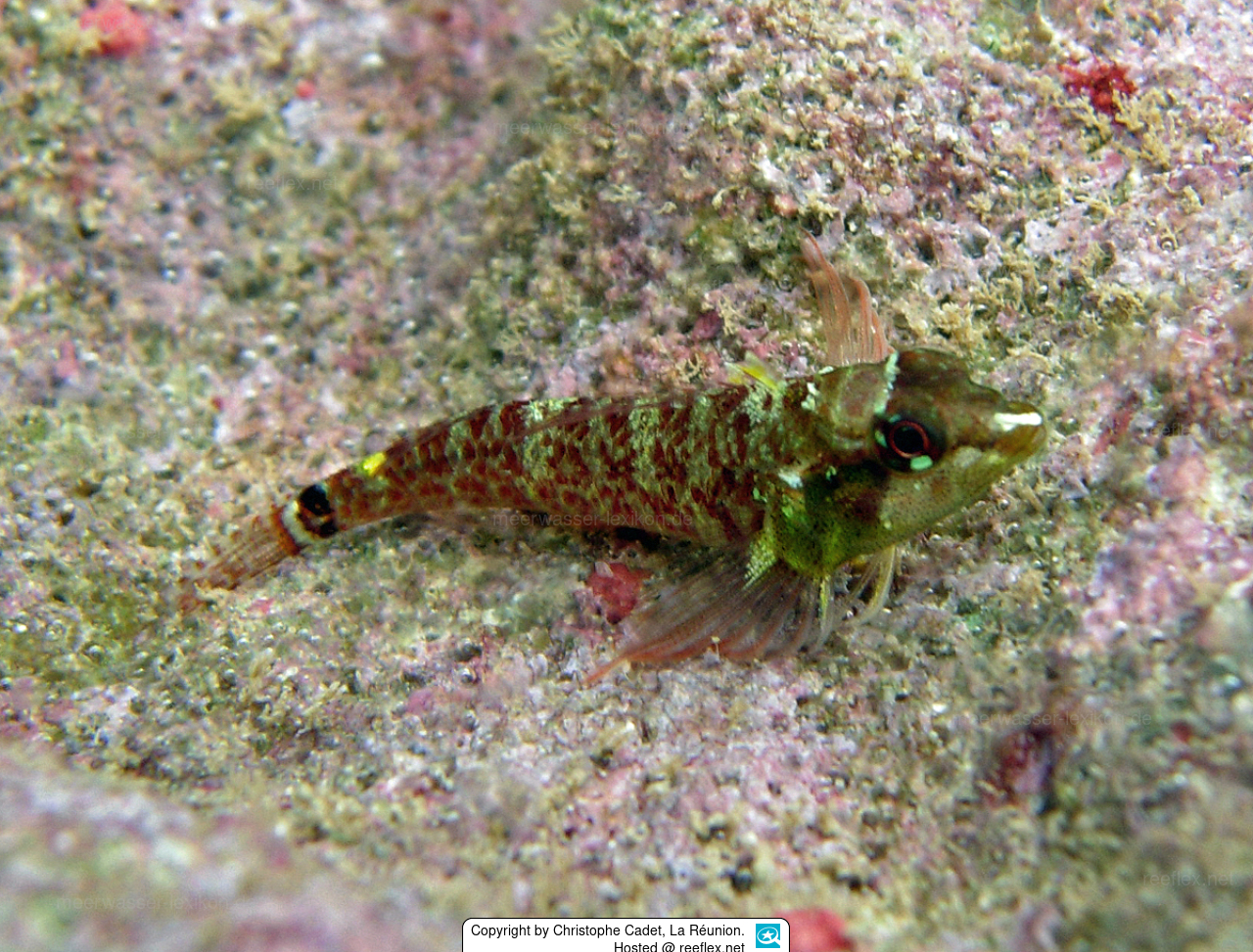Info
Enneapterygius elegansi is a tropical blenny known from reefs in west-central India to the central Pacific Ocean and swims in a depth range of 0 - 12 metres.
The blenny is found in coral and rocky reefs as well as in tide pools.
Male hourglass blennies can reach a maximum length of 4 centimetres, while females remain slightly smaller.
The blenny takes its name from an hourglass-shaped marking on its body.
Synonym: Tripterygium elegans Peters, 1876
Jumping guard
A jumping guard prevents (nocturnal) fish from jumping out.
Wrasses, blennies, hawkfishs and gobies jump out of an unprotected tank in fright if their night rest is disturbed, unfortunately these jumpers are found dried up in the morning on carpets, glass edges or later behind the tank.
https://www.korallenriff.de/en/article/1925_5_Jump_Protection_Solutions_for_Fish_in_the_Aquarium__5_Net_Covers.html
A small night light also helps, as it provides the fish with a means of orientation in the dark!
The blenny is found in coral and rocky reefs as well as in tide pools.
Male hourglass blennies can reach a maximum length of 4 centimetres, while females remain slightly smaller.
The blenny takes its name from an hourglass-shaped marking on its body.
Synonym: Tripterygium elegans Peters, 1876
Jumping guard
A jumping guard prevents (nocturnal) fish from jumping out.
Wrasses, blennies, hawkfishs and gobies jump out of an unprotected tank in fright if their night rest is disturbed, unfortunately these jumpers are found dried up in the morning on carpets, glass edges or later behind the tank.
https://www.korallenriff.de/en/article/1925_5_Jump_Protection_Solutions_for_Fish_in_the_Aquarium__5_Net_Covers.html
A small night light also helps, as it provides the fish with a means of orientation in the dark!







 Christophe Cadet, La Réunion
Christophe Cadet, La Réunion



































